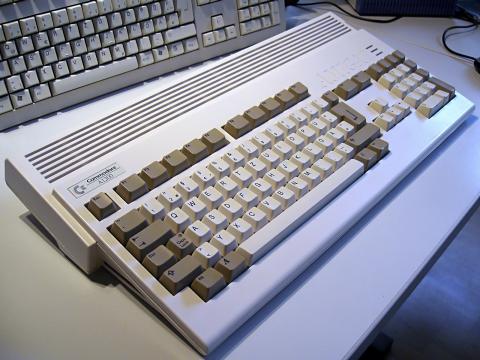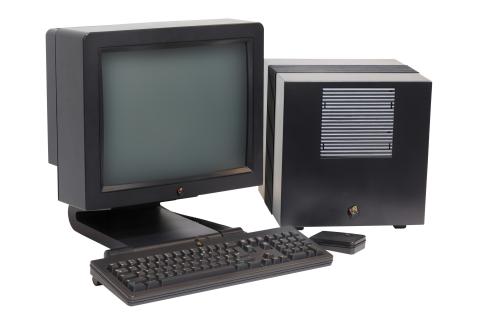
I’ll kick off this issue with a shout-out to “the new code,” where Dudley Storey encourages us to “break out of the box” with images on our websites. He shows us how to enjoy “Better Image Borders with Blend Modes” and I certainly agree that sometimes it’s nice to do something a little different. I’ve used his technique on the hero image on this page.1 I must say, I like it.
I’ve been stoking the fires of my digital nostalgia since I last wrote here. Thus there is a noticeable slant towards the technology of yesteryear in this issue.
It started with the 30th birthday of the Commodore Amiga computer, which was widely covered on the Internet.

Back in the day, the Amiga was my most-prized possession. I loved my little A1200. I invested so much time (and money) building out the best A1200 it could be. I had an MC68060 accelerator, a 500MB (yes, megabyte) external hard-disk, a Compact Flash IDE reader with a 4GB card, a 10Mbps Ethernet adapter and a DVI adapter. That machine was as loaded as it could be by the time I parted with it.
I followed up reading about the Amiga’s 30th with hours of trawling through back issues of CU Amiga, Amiga Computing and Amiga Format magazines over on the Internet Archive. Oh, the sweet, sweet memories…
Despite the Amiga being a graphically superior machine in its day, a favourite pastime of mine was playing text adventures. I liked the at-your-own-pace game-play as opposed to the against-the-clock style of the majority of “arcade” games. I also enjoyed the more cerebral challenge of the text adventure. My favourite producer of interactive fiction was, without a doubt, Infocom. It was this prodigious stable that produced such legends as the Zork series, The Hitchhiker’s Guide to the Galaxy, Leather Goddesses of Phobos and Bureaucracy (which was probably my all-time favourite). So it is with this background that I have been devouring the Infocom-tagged articles on Jimmy Maher’s “The Digital Antiquarian.” I also discovered the Lost Treasures of Infocom allowing me to enjoy these games all over again on my Mac. Sadly however, Activision didn’t include Bureaucracy nor The Hitchhiker’s Guide to the Galaxy in the set. I presume this is due to licensing/legal issues with the estate of the late Douglas Adams.
Once I finished my Amiga love-fest, I indulged in “An Hour of NeXT History.”
The NeXT computers always fascinated me. These were the machines that Steve Jobs, ousted from Apple, created to make his third big impression on the world.2 They were also the computers which introduced NeXTSTEP, the object-oriented precursor to OS X, to the world.3
To add to the mystique, Sir Tim Berners-Lee used a NeXT computer to create the World Wide Web, hosting the world’s first website on that same machine.
Thus the NeXT was an object of desire for me, for a long time. After all, which self-respecting computer geek wouldn’t want a sexy black cube on their desk?

One of my favourite haunts on the Internet was The Well, an online forum of sorts, where I forged friendships (some of which flourish to this day) and waxed lyrical about whatever topic was my flavour of the moment. It was with a deep sense of sentimentality that I read “The Epic Saga of The Well.” I miss the real sense of community I found there and might return to it one of these days.
When not considering bygone days, the following gems have captured my attention:
A Visual Introduction to Machine Learning: this is heavy(ish) but fascinating nonetheless. I’m looking forward to further articles in the series.
The Guardian tells us that The End of Capitalism Has Begun. I’ve often thought about a post-capitalist era. It seems inevitable to me that we will shun capitalism at some point. A system that puts too much power into the hands of a small number of people is dangerous for the subjugated majority. I’m convinced that people will rise up against this system when it outrages their sense of injustice enough. I hope this revolution occurs in my lifetime.
“What’s this?” you cry. “When did we start discussing economics on the Perpetual βeta?” Okay, okay, I hear you. Let’s get back to the tech stuff. Let’s talk about the Web…
A great place to start is with Maciej Cegłowski’s thought-provoking, yet entertaining, discussion on the “First 100 Years” of web-design. Now read Hossein Derakhshan’s “The Web We Have to Save.” Mind blown!
Regular readers will know of my interest in web performance. “More Weight Doesn’t Mean More Wait” is an interesting, slightly alternative take on the subject. I’d still posit that I would choose actual, measurable performance over the more fragile “perceived performance.”
On the web-design front: Christian Holst discusses Responsive Upscaling: Large-Screen E-Commerce Design; Daniel Codella writes about How The Next Web Redesign Puts Content First and James Archer informs us that The Hamburger Menu Doesn’t Work. Caught your breath yet?
I’ll close this issue with three typography-related links:
-
Tufte CSS is a nice base to build a website on, particularly if that website is going to be text-heavy. Riffing on some of the design preferences of Edward Tufte, the style-sheet features great typography, a bias towards side-notes and “tight integration of graphics with text”;
-
rTypeset is a Ruby port of Typeset.js, a typographic pre-processor for HTML;
-
Hack is a free typeface specifically designed for program source code… and it’s gorgeous. I’ve adopted this, system-wide, as my de-facto fixed-width typeface.
-
If you’re reading this in an RSS reader or similar, you won’t see the effect. Visit this web-page in your browser for the best experience.™ ↩︎
-
I’d argue that the “apple ] [” was Steve Jobs’ first revolutionary product and the original Macintosh his second. The impact of the Apple Computer 1, while historically significant, wasn’t felt outside of a small collection of computer enthusiasts (and on auction floors today). ↩︎
-
I used the Magic User Interface to model my Amiga Workbench to resemble NeXTSTEP as closely as I could. ↩︎
 The Trawler: № 3
The Trawler: № 3